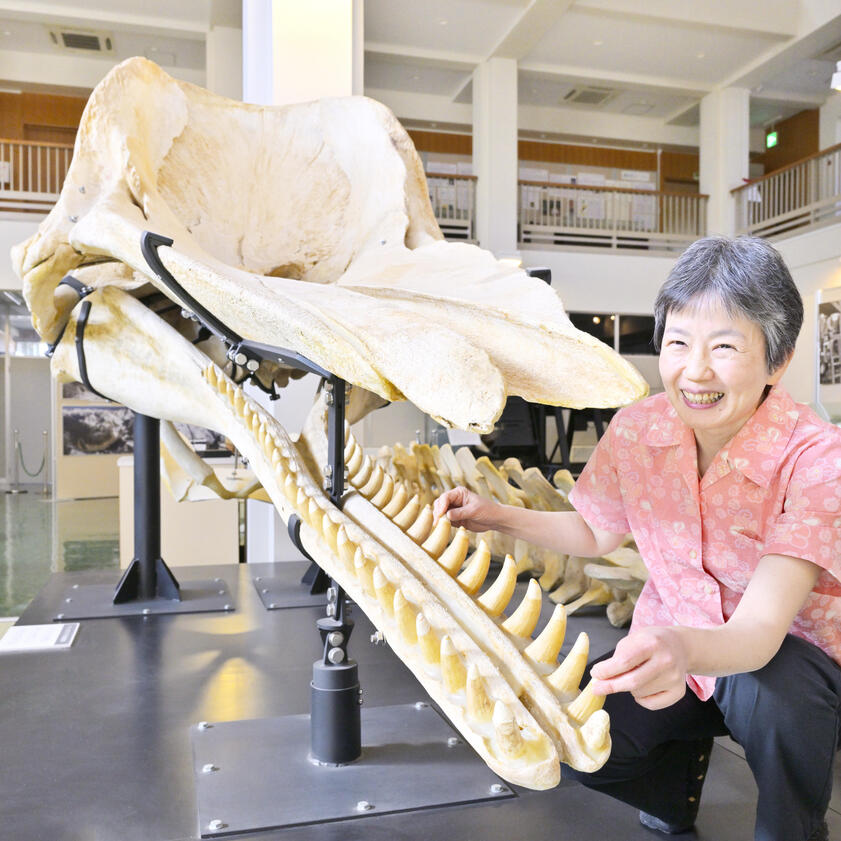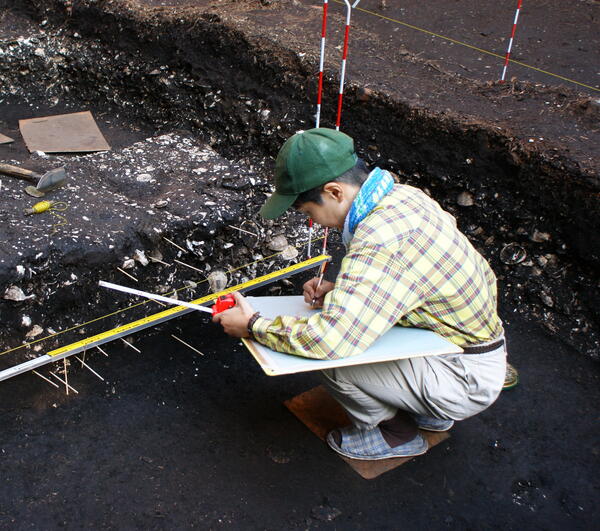Professor Yasuko Nakamura

Researchers'
Associate Professor
Michiko Niimi
Nagoya University Museum / Graduate School of Informatics
It’s something my mentor told me when I was a student. We archaeologists are always thinking about how we can get as much information as possible from the remains we unearth. Just blankly gazing at remains will tell us nothing. But if we observe remains with the experience of extensive observation training, they will tell us many things. So, this saying tells us that we must always be ready to listen to what the remains tell us. I’ve spent many years studying archaeology, but even now — especially now — I strongly feel that this is completely true. It’s something I always try to remember.
When we excavate archaeological sites, we unearth all sorts of things. Some of the things we discover are bones, including shells and fish bones that were thrown away after people ate them and human bones buried in graves. My research involves using these bones and shells as materials to help us reconstruct the lives and cultures of ancient peoples.

Field work at Onnetou Shell Mound in Nemuro City, Hokkaido
At university, I majored in archaeology for no particular reason. For my first dig, I went to Hokkaido to excavate the remains of a home thought to have been built around the 12th century. As we removed each layer of soil, the shape of the dwelling gradually appeared, and I realized how interesting excavation was. In the home, there was a cooking stove with ashes left in it. We sifted the ashes and found a lot of burned fish vertebrae. They were from a type of codfish called saffron cod. From the size of the bones, we learned that it was a full-grown fish, probably caught when it came to the shallows to lay eggs in the dead of winter. I was amazed that with nothing but some small bones, we were able to learn the season the fish was caught. That was what inspired me.
I guess when I discover something that may overturn conventional theories or lead to completely new prospects. I really enjoy making observations and taking measurements, collecting and aggregating data, and carving a path to the final conclusion. Although I admit, I too often find something that makes me think, “Wow, this is a big deal!” only to later realize it’s not that significant.
It was once thought that people in Japan began raising pigs as livestock during the Yayoi Period (about 3,000 years ago), but this study shows that many pigs had already been introduced to Okinawa from China 7,200 years ago. Even now, people in Okinawa eat much more pork than on the main island of Japan. Okinawa is known for its unique food culture; they eat not only pig meat but also its skin and blood. In fact, large amounts of bones from pigs eaten by people have been unearthed at remains from a few hundred years back in the middle and early modern ages. To be honest, even I first thought that the bones unearthed at remains over 7,000 years old had to be from wild boars that they hunted. I couldn’t believe that people were raising pigs so long ago, even in Okinawa.
So we went to Okinawa to see materials said to be boar bones that were unearthed from the 7,200-year-old Noguni Shell Mound. When we studied the materials, we saw that the lower jawbones were all shaped like those of pigs (photo below). Pigs are farm animals that evolved from wild boars that were domesticated over the course of thousands of years. It is well known that when animals are domesticated, the shapes of bones in various parts of their bodies change. For example, pigs have developed an indentation in the lower jawbone (indicated by arrows in the photo) that boar lower jawbones lack. I found that every single jawbone unearthed from the Noguni Shell Mound had this kind of indentation. It was so shocking to me that I couldn’t help but cry out, “What? Are they all pigs?!”
From spring to autumn, I go to many places to excavate and investigate materials. I have a lot of wonderful memories of beautiful scenes from these survey sites — Lake Kutcharo after a rainfall, Hakata Bay sparkling in the setting sun — and when I remember these scenes, I can usually overcome any difficulties I’m facing.
I’m not good at speaking in front of people, so when I became a lecturer, I was worried if I’d be able to give a lecture in front of so many students in class.
I have many research topics I want to address in future, so I want to see and examine a variety of different materials for that. Due to the COVID-19 pandemic, it’s been a while since I’ve gone abroad to see materials, so I want to resume overseas field work as soon as possible.
Name: Michiko Niimi
Affiliation: Nagoya University Museum / Graduate School of Informatics
Title: Associate Professor
Profile:
Dr. Niimi earned her PhD after completing the doctoral program in Archaeology at the Graduate School of Humanities at the University of Tokyo. Before taking her current position, she worked as an assistant professor at the University of Tokyo’s Faculty of Letters and at Nagoya University’s Graduate School of Human Informatics.
Her hobbies include nature walks and fishing. These excursions often double as opportunities to collect modern skeletal specimens to use in her research, such as bodies of birds and mammals on the ground or fresh fish.